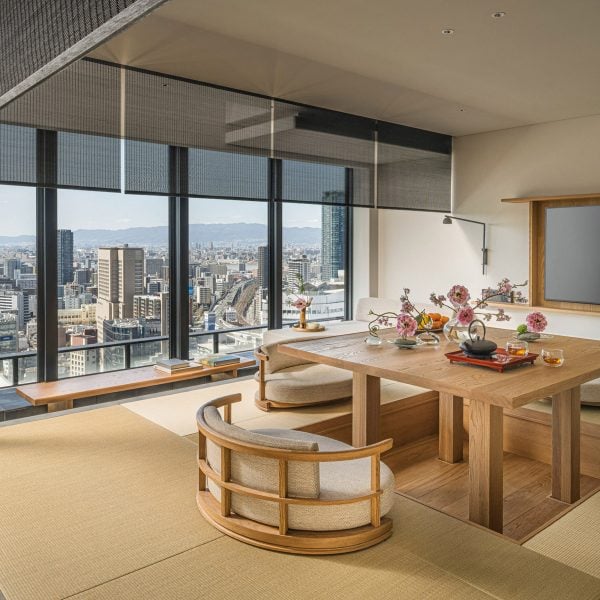Design studio Simplicity used a palette of pure supplies together with wooden, stone and tatami to evoke the feel and appear of a time-honored Japanese inn when creating the ryokan ground of the 4 Seasons Lodge in Osaka.
The resort is situated within the Dojima enterprise district of Osaka, set inside the multi-use One Dojima high-rise by Japanese structure agency Nikken Sekkei.
Throughout 12 of the constructing’s 49 storeys, the 4 Seasons homes 175 visitor rooms, a spa and 6 completely different eating places and bars.
Simplicity was liable for remodeling the twenty eighth ground of the resort into the town’s “first up-to-date ryokan expertise” – referencing Japanese inns notable for his or her elaborate omotenashi hospitality and time-honored options resembling tatami rooms, futon beds and communal baths.
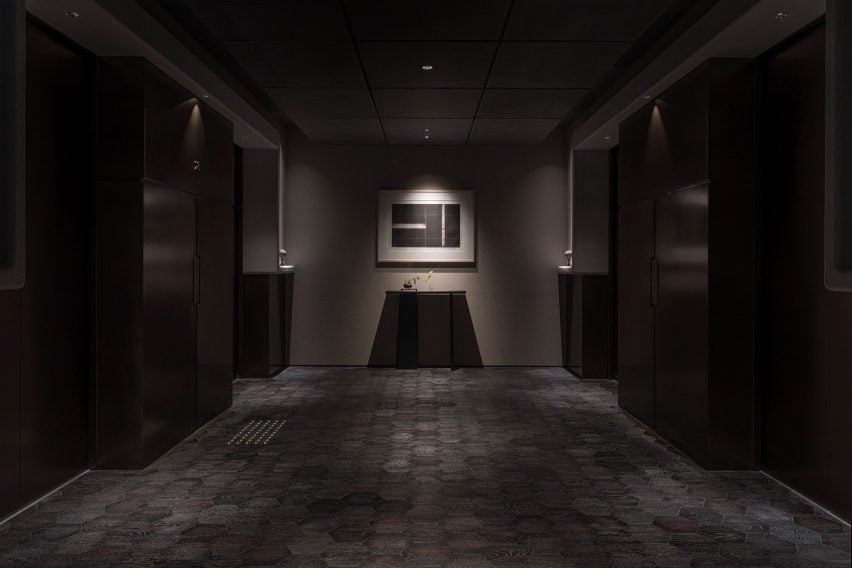
Simplicity merged these historic components with up to date conveniences to recreate “the harmonious steadiness of custom and up-to-date innovation that defines Osaka”.
The studio designed the interiors for the whole ground together with its 21 tatami rooms and suites – accessed through a separate check-in counter – in addition to circulation areas and a devoted tea lounge, leading to a holistic scheme.
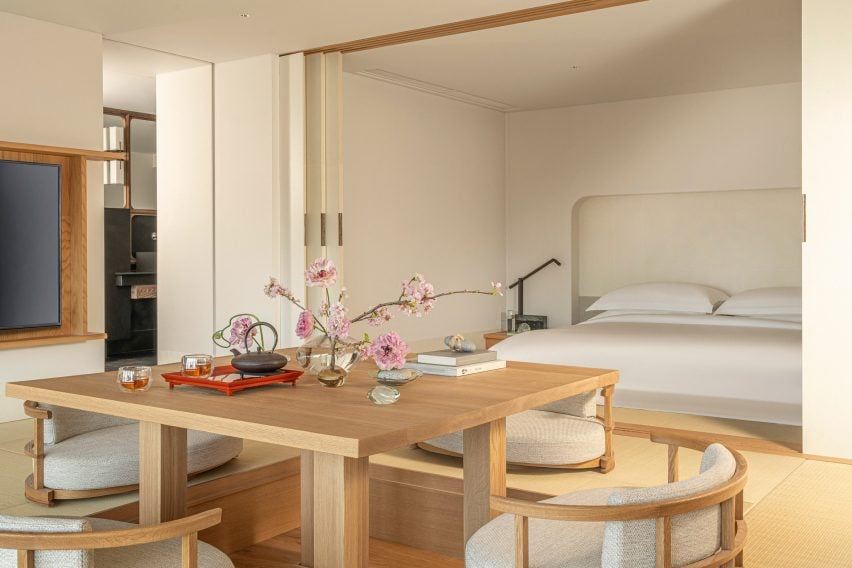
Gloomy hues enshroud the hallways and the elevator touchdown of the twenty eighth ground, also called the Gensui ground primarily based on the Japanese idea of “gen”, which refers back to the completely different shades of black discovered within the deepest darkness.
This moody color palette affords a stark distinction with the resort’s lighter-toned Western-style rooms and customary areas, courtesy of Japanese corporations Curiosity and Design Studio Spin.
“Because the elevator doorways slide open, visitors discover themselves in an sudden realm that appears and feels completely completely different from the remainder of the resort,” Simplicity informed Dezeen.
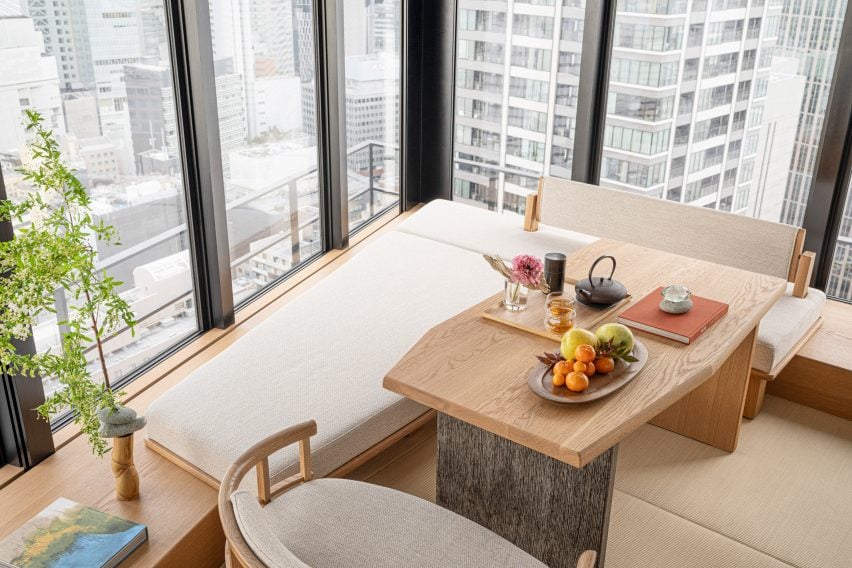
Simplicity’s ryokan-style visitor rooms function a traditional doma entrance space the place visitors can take away their sneakers earlier than stepping onto the rush-grass tatami flooring.
“Tatami mats maintain a significant place in Japanese life and have historically been used for on a regular basis actions like eating, working and sleeping,” the designers stated.
“We wished worldwide visitors to expertise this attractive side of our tradition as authentically as attainable, with out having to surrender up-to-date comforts.”
Simplicity designed all the furnishings within the rooms, together with low-slung chairs that allow visitors to take a seat nearer to the bottom. The round form of the chairs additionally permits for sitting cross-legged.
Different real Japanese particulars discovered within the rooms embody futon-style platform beds, sliding doorways, washi paper headboards and bamboo sudare blinds.
A palette of pure supplies was chosen to reinforce the snug really feel of the areas and make sure the numerous surfaces enhance with age and utilize.
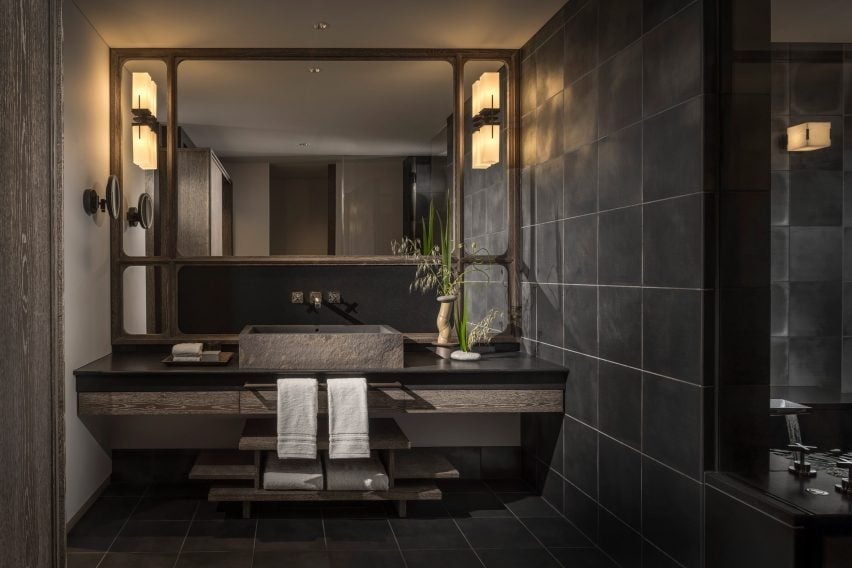
A lot of the bespoke joinery options Simplicity’s signature curved traces and rounded corners. Tables with angled edges make motion round them extra easy, whereas tatami-inspired benches on the entrance to every room can be utilized for storing baggage.
Elsewhere on the Genusi ground, Simplicity designed the interiors of the Sabo tea lounge, which serves breakfast bento bins and a collection of Japanese drinks.
The inside options custom-made furnishings designed to reinforce the tea-drinking expertise and dim hexagonal tiles that characterize the “gen” idea.
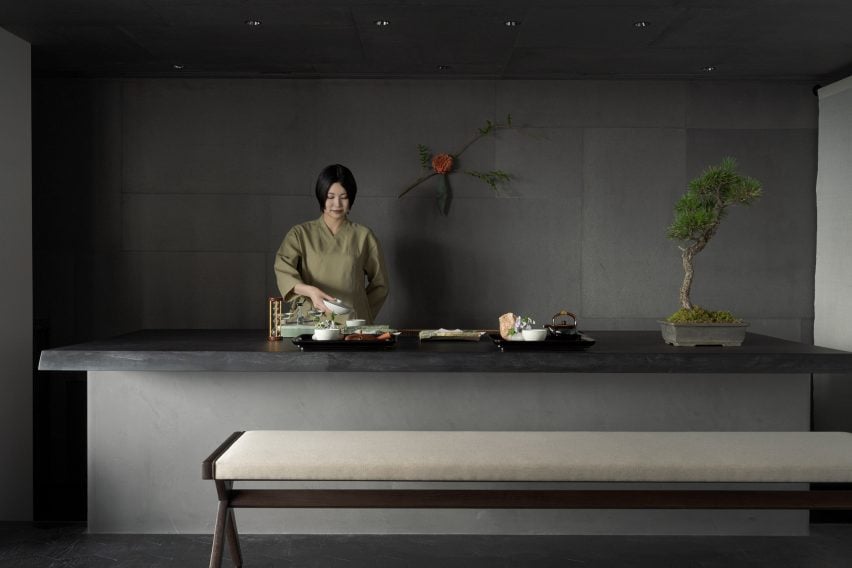
Simplicity was additionally liable for designing the resort’s spa space on the thirty sixth ground, the place heated ofuro soaking tubs fulfil the identical perform because the communal baths discovered in lots of ryokans.
The Osaka resort is the fourth 4 Seasons Lodge in Japan as the corporate goals to capitalise on Japan’s surging economic system and the upcoming Expo 2025 Osaka, which can function nationwide pavilions by structure studios together with Nikken Sekkei, Foster + Companions and Kengo Kuma & Associates.
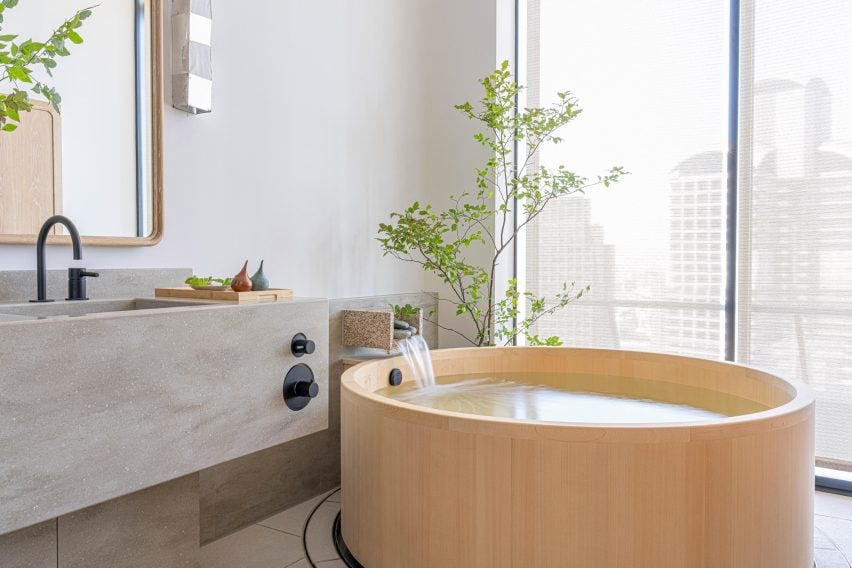
Designer Shinichiro Ogata based Tokyo-based studio Simplicity in 1998, making use of his up to date tackle time-honored Japanese design philosophies to initiatives starting from structure and interiors to product, graphic and packaging design.
In his function as a artistic director, Ogata has overseen the inside and spatial design for manufacturers together with Hyatt Lodges and skincare model Aesop, together with a retailer in Kyoto that includes screens made out of draped black material.


